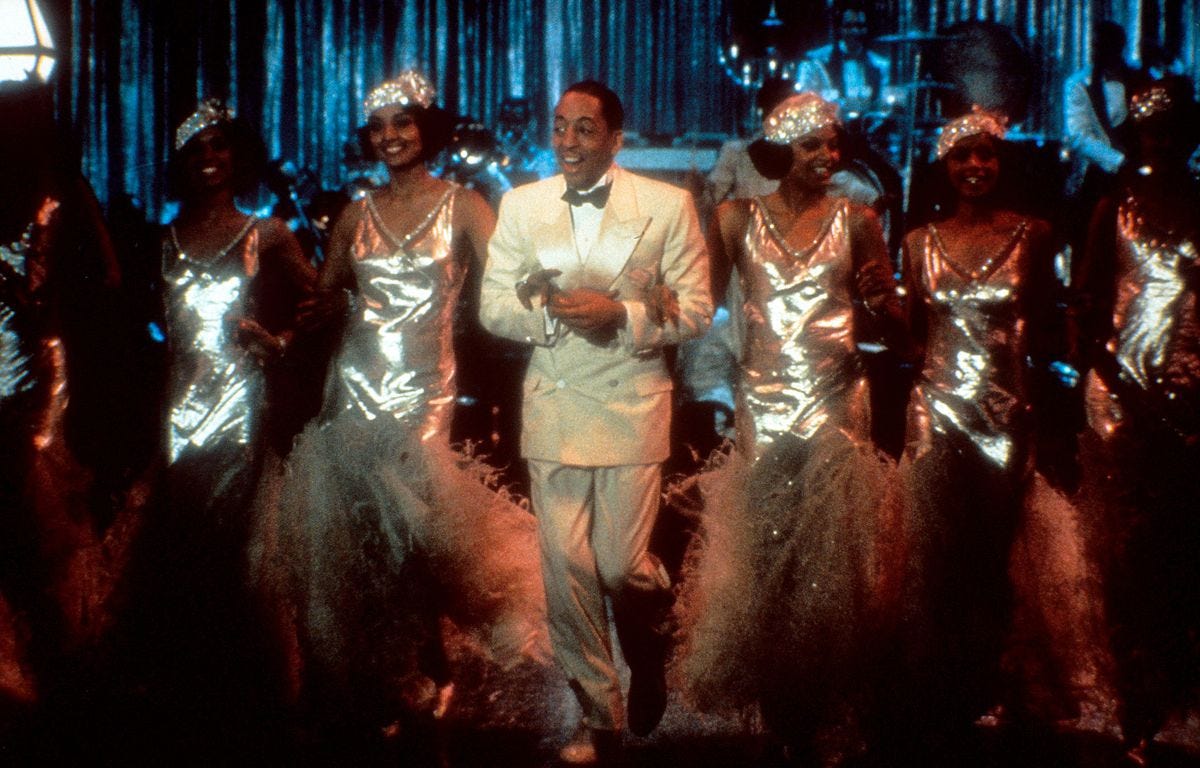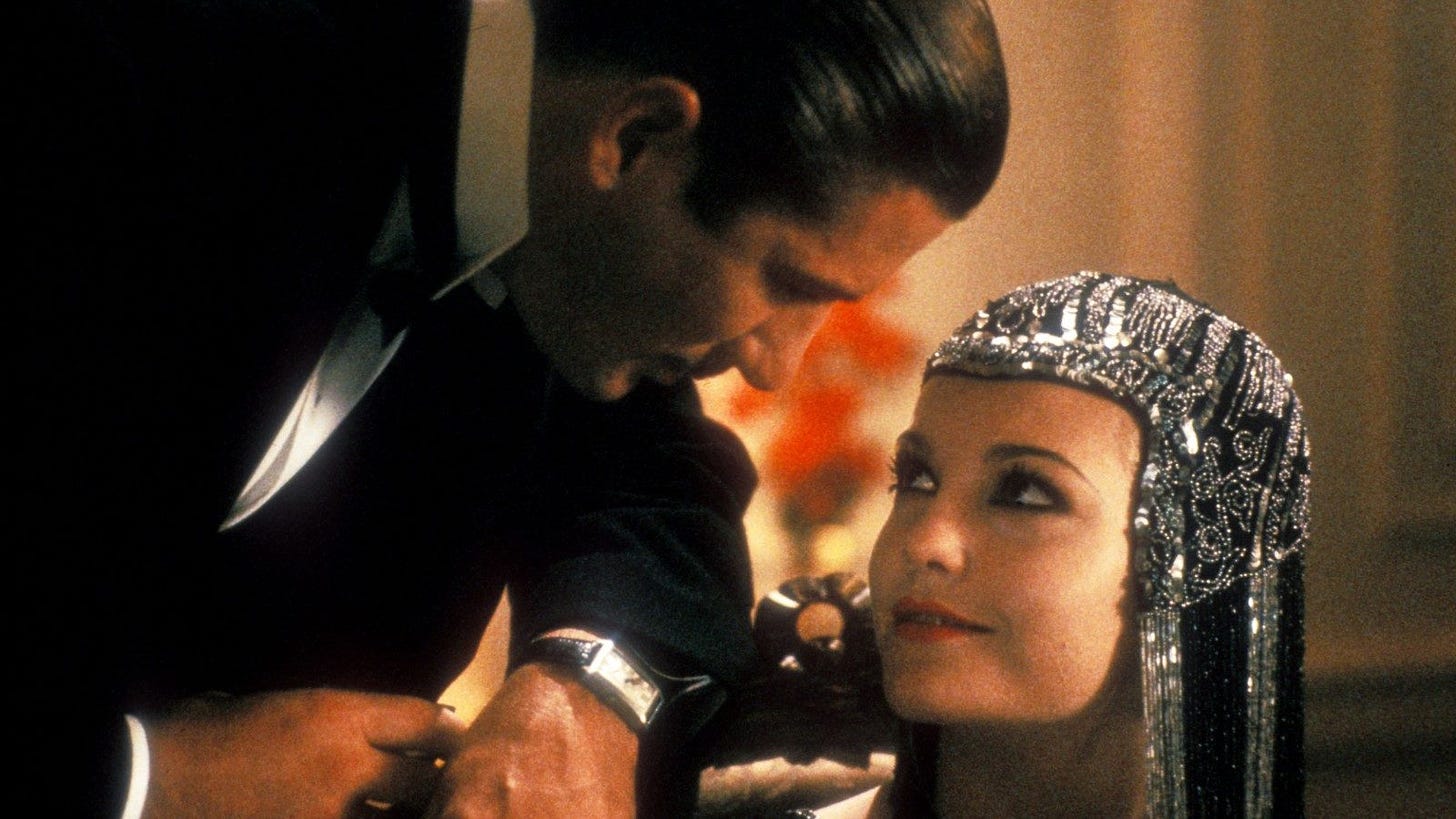The Cotton Club: Encore Cut

Deep into the 1980s, Francis Ford Coppola, once acclaimed for his prestigious work with The Godfather’s 1 & 2 and Apocalypse Now, had fallen into the category of director for hire. Like many directors in the post Heaven's Gate era of Hollywood, Coppola found it hard to find funding for personal projects he wanted to make. After losing more than $20 million on his maximalist dream project One From the Heart, bankruptcy drove him into the arms of multiple studios to make a wide array of pictures; from romcoms, to coming of age films to the unique hybrid that is The Cotton Club. A multilayered, complex film that works as a Depression-era gangster film, a melodramatic romance film and music film about the famous Cotton Club of Harlem and its performers.
Originally intended to be marketed as Coppola’s return to the gangster genre, Mario Puzo, the writer of The Godfather, was originally attached to the scriptwriting and marketing of the film. However, that wasn’t the film Coppola wanted to make, and Puzo was eventually replaced with William Kennedy, a journalist who had covered and written about the 1920s extensively. Coppola wanted to use this picture to showcase his love and appreciation for the Harlem jazz and music scene in the 1920s, but also make a political statement about racial segregation; the politics linking mobsters and Hollywood; and the role of class and race in the music scene at the time. Despite the year being 1984, these ideas were still too radical for Hollywood and the studio butchered the film, removing large portions of the scenes featuring Gregory Hines and a large portion of the black cast. Coppola claims that the higher ups told him, “Film’s too long. Too many black stories. Too much tap dancing. Too many musical numbers.” But Coppola was no stranger to production nightmares including clashes with studio executives and big suit financial backers. After clashing with producer Robert Evans while making The Godfather, about almost every aspect of the film, it is not surprising there was a clash of ideas on The Cotton Club too.
Nobody really knows who exactly gave the order to butcher the film, removing its soul and turning it into something it was not. Coppola puts a large portion of the blame on himself, for not holding off enough against the upper echelons of the Hollywood system; but after fighting Hollywood for a previous decade one wonders how much he would’ve actually been able to do. Once again, and not for the last time, Coppola found himself a victim to the throes of capitalistic movie production; where financial backers and studios are more interested in generating a profit than telling important stories and creating personal art films. There is a case to be made for Coppola being one of the true Hollywood mavericks since Orson Welles - a director who was basically exiled from America and went on to create art films around Europe funded by his own acting. His entire life, Coppola wanted to work outside of the system, having full control over his films and being able to bring to life new technologies, techniques and stories. Sadly this wasn’t the case for this film but luckily, ironically enough after only doing the film to escape from debt he used entirely his own money, he was able to recut this film and restore it in all its sheer beauty.

Just like One From the Heart, this film has a dream-like inertia feel to it, but is deep-rooted in the real and often gritty world of Harlem. Many of the characters - Bob Hoskins’ Owen Madden, James Remar’s Dutchman and Laurence Fishburne’s Bumpy -are all based on real life characters who existed in this time period. Even the Hines brothers - who play the Williams brothers - are real life brothers echoing their own personal story in a fictional way. According to Maurice Hines, Coppola gave them free rein to create their own story, and many of the scenes between the brothers - particularly the more bitter ones - were improvised and crafted by themselves. The Cotton Club has an incredibly stacked cast featuring an early Nicolas Cage performance and small, yet excellent, roles from Laurence Fishburne and Tom Waits (Waits would go on to cameo frequently in Coppola films after becoming close with the director while scoring One From the Heart).
“Sound is your friend because sound is much cheaper than picture, but it has equal effect on the audience – in some ways, perhaps more effect because it does it in a very indirect way.”
“The essence of cinema is editing. It’s the combination of what can be extraordinary images of people during emotional moments, or images in a general sense, put together in a kind of alchemy.”
Two quotes from Coppola himself that can very easily be applied to a film like The Cotton Club. On a technical scale this is easily one of Coppola’s finest achievements. Very few locations are revealed in the film despite its fairly long running time; most of the film takes place in the club itself and focuses on the performers, the mobsters and the audience. Extravagant is the only word that can really summarise how the filming of the performers is handled. Lighting and shadows are handled elegantly and everything looks mesmerising, you can feel the love Coppola has for the subject matter just from the way it is filmed; whether it is Lonette McKee’s rendition of Stormy Weather or the incredible introductory performance of the Hines brothers. Costume and set designs are fabulous across the film and give it that authentic Depression-era atmosphere, even the posters for the films referenced look like they’ve come straight out of the pre-code era such as Scarface. What truly makes this film stand out - it was even nominated for an Oscar for it - is the editing. Whether it is fade out transitions that overlay scenes onto each other; cross cutting between brutal gangster shoot outs and Gregory Hines’ somber solo tap dance; or the slow and focused editing of the performances, it looks simply beautiful.

The amalgamation of genres in this film is enough to dizzy any viewer but at the heart of the film, it is a romance film. A love story that ties in interconnected people throughout a period of about five years. Musical pieces and mob violence only facilitate the ever growing bonds between the characters. Following on from his deeply romantic, fantastique tribune to musicals One From the Heart, it is no surprise that Coppola would continue to direct his films in a similar, albeit somewhat toned back, style. Alongside the romance is a fairly articulate critique of the racism that was embedded into the foundations of 1920s American life. Coppola constructs a dialectical approach that shows deep admiration and endearment for the performers of the club yet shows condemnation towards the ugliness that surrounded not only the management of the club, but the social norms that restricted black people from being able to see their own people perform. Alongside the politics of race and class there is another layer to the film, although fairly subtle, which is the ties the mob has to the police, Hollywood and politicians. These themes were ever present in his previous two Godfather films, most notably number 2, and are not on the forefront. However, the mobs ability to pull strings to get Gere’s character a movie star career despite how terrible of an actor he is, or the ability to get Owney Madden a great, lavish cell despite being an infamous outlaw; shows how far the mob ties go in the 1920s Depression era.
What really ties the film together is the performances. Both the acting and the musical numbers often working in parallel are just spectacular. Gregory Hines absolutely shines in every scene he is in with his charisma completely lighting up the screen. Lonette McKee is also phenomenal as Hines’ love interest however, her character isn’t just there to be another love interest; her character is fleshed out with desires and fears and she absolutely smashes it. James Remar is incredibly slimy as the bootlegging gangster known as the Dutchman and one notable scene where he kills an enemy mobster is both shocking and beautiful in all its macabre glory. One could not talk about performances without the brilliant one by Fishburne, whilst he doesn’t have a high amount of scenes his presence is, as always, fantastic and his speech about being a gangster is magnetically performed.
Like a lot of Coppola’s post-Apocalypse Now career, The Cotton Club for the most part has fallen under the category of “lesser” or “forgotten” films by Coppola. Despite this it remains an electric and astonishing film that should be seen by anyone who likes his previous films. However, make sure you watch the newly restored Encore cut, and not the original theatrical release.
